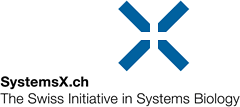Communicating with stem cells
Microscopic image of adult stem cells from the umbilical cord. Image: Zellwerk GmbH Oberkrämer, Germany
Stem cells can transform themselves into any type of cell and are thus considered the factories of the human body. For example, they produce our blood by dividing and then turning into red or white blood cells. Stem cells possess great potential for the treatment of patients with diseases, such as type 1 diabetes, which requires the daily administration of insulin, or leukemia. Donated stem cells can form the basis of treatment.
These can be found, for example, in the umbilical cord blood of a newborn. Today, umbilical cord blood is increasingly stored in biobanks. If someone is in need of donor stem cells, these biobanks can be accessed.
The biologist Weijia Wang at ETH Zurich examines how stem cells communicate and transform into exactly the cells that the body needs. If we could understand this language, then we may one day be able to directly communicate with the stem cells, giving them instructions to produce the cells that can cure patients.
Contact: Weijia Wang, weijia.wang(at)bsse.ethz.ch, +41 61 387 33 98
